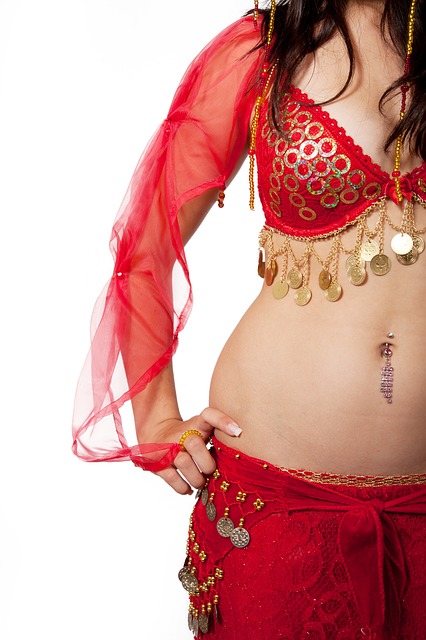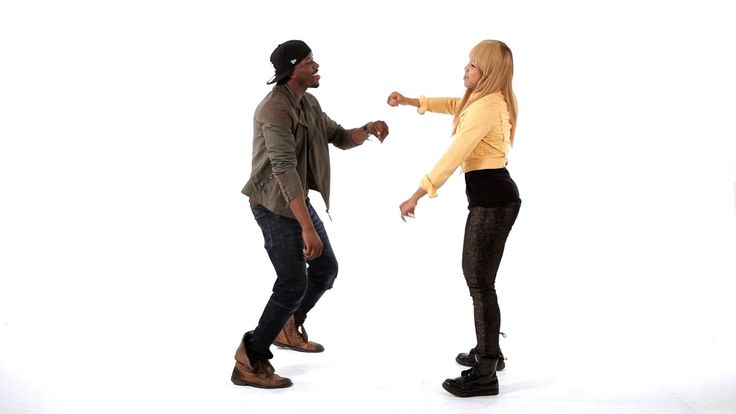How to become a professional belly dancer
Belly Dancer - Salary, How to Become, Job Description & Best Schools
How to Become a
The complete career guide to be a Belly Dancer: salary, job growth, employers, best schools, and education you may need to get started.
Why We Love It
-
4.6%
Job Growth Rate
-
Growing Demand
Job Outlook
-
Creativity Focused
Career Attribute
-
Flexible Hours
Career Attribute
Belly dancers perform in shows and restaurants, and at events and private parties. They are experts in the art of Middle Eastern dance and can perform in both classical and modern styles. Professional belly dancers are also business people who market their talents to make money doing what they love.
What is a Belly Dancer?
The following job responsibilities are common for individuals in belly dancer roles:
- Belly dance for crowds of people as part of event entertainment or formal productions
- Perform both classical and modern belly dancing moves
- Market dancing services in multiple ways to find new gigs and attract interest
- Keep formal records of business activities, profits, and expenditures
- Dance for long periods without becoming winded and while smiling
A Day in the Life
There are few employers who hire full-time belly dancers, so most professional belly dancers are self-employed. Because of this, aspiring belly dancers should be both proficient at dancing in Middle Eastern styles and educated on running a business. While professional belly dancers spend a lot of time practicing, performing, and teaching, they also spend a lot of time marketing their services, running their businesses, negotiating pay for gigs, and organizing business files and documentation.
While professional belly dancers spend a lot of time practicing, performing, and teaching, they also spend a lot of time marketing their services, running their businesses, negotiating pay for gigs, and organizing business files and documentation.
Professional belly dancers earn money through a variety of ways. At times, they may perform in major venues as part of concerts and other formal productions. They may perform for celebrities, or secure roles dancing in movies or television shows. However, these opportunities are not always available, so professional belly dancers also secure smaller gigs performing in restaurants, for birthday parties, or for local events. Many professional belly dancers also teach belly dancing lessons to earn additional income.
Aside from running their business and performing, professional belly dancers spend a lot of their time practicing. To stay competitive, they need to stay in shape, be able to perform a variety of styles, and execute routines perfectly. When performing, belly dancers are required to dance for long periods of time without getting winded and while maintaining a smile. The best belly dancers spend a significant amount of time practicing in order to perfect their craft.
When performing, belly dancers are required to dance for long periods of time without getting winded and while maintaining a smile. The best belly dancers spend a significant amount of time practicing in order to perfect their craft.
Typical Work Schedule
Most professional belly dancers set their own hours and can choose when they want to work. They can work either part- or full-time and may be required to work any number of shifts—during the day, in the evening, or on weekends.
Typical Employers
Most belly dancers are self-employed. They run their own businesses and take on clients to earn money from performances. Some may also own dance studios and offer belly dancing or fitness classes.
How To Become a Belly Dancer
No formal higher education is required to become a belly dancer. Many professional belly dancers train in small dance studios or under the guidance of a mentor. While some start dancing at a young age, many others pick the style up as adults and practice, train, and perform for years before becoming successful. Others train in the Middle East in order to learn the style directly from the source.
Others train in the Middle East in order to learn the style directly from the source.
While excelling as a belly dancer may be more about talent, practice, and dedication, excelling as a professional belly dancer has a lot more to do with your business acumen than your dancing abilities. For this reason, many professional belly dancers find that they benefit from pursuing college degrees that offer business and marketing courses. Some pursue bachelor’s degree in dance, theater, or fine arts and take business and marketing classes on the side, while others pursue associate’s or bachelor’s degrees in business and/or marketing.
An education in business and marketing can help professional belly dancers achieve more success in their careers because it teaches them how to run a business, how to maintain the proper documentation, and how to market their services to increase engagements. This knowledge can be critical if you plan to manage your own belly dancing business or own/operate a belly dancing studio.
Belly Dancer Salary Data
We’ve provided you the following to learn more about this career. The salary and growth data on this page comes from recently published Bureau of Labor Statistics data while the recommendations and editorial content are based on our research.
National Anual Salary
Low Range
---Average
---High Range
---National Hourly Wage
Low Range
$9/hrAverage
$18/hrHigh Range
$33/hrHow do Belly Dancer salaries stack up to other jobs across the country? Based on the latest jobs data nationwide, Belly Dancer's can make an average annual salary of ---, or $18 per hour.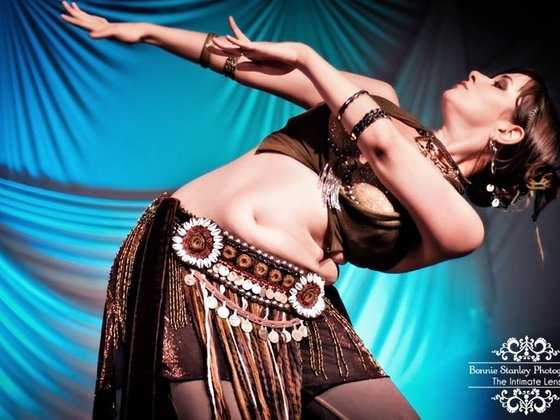 This makes it an Above Average Salary. On the lower end, they can make --- or $9 per hour, perhaps when just starting out or based on the state you live in.
This makes it an Above Average Salary. On the lower end, they can make --- or $9 per hour, perhaps when just starting out or based on the state you live in.
Salary Rankings And Facts
Highest Education Among Belly Dancers
- 0.5% Doctorate
- 4.3% Masters
- 17% Bachelors
- 10.6% Associates
- 29% College
- 26.7% High School
- 11.9% Less than High School
Job Growth Projections and Forecast
2014 Total Jobs
13,0002024 Est. Jobs
13,600Job Growth Rate
4. 6%
6% Est. New Jobs
600How does Belly Dancer job growth stack up to other jobs across the country? By 2024, there will be a change of 600 jobs for a total of 13,600 people employed in the career nationwide. This is a 4.6% change in growth over the next ten years, giving the career a growth rate nationwide of Below Average.
Growth Rankings And Facts
What Companies Employ The Most Belly Dancers
| Industry | Current Jobs | New Jobs Needed | % Increase |
|---|---|---|---|
| Self-employed workers | 2,000 | 100 | 0% |
| Drinking places (alcoholic beverages) | 1,700 | --- | --- |
| Other schools and instruction; private | 900 | 200 | 0% |
Want To Be a Belly Dancer? Get Started!
Generate your free SmartPlan™ to identify colleges you like, and potential ways to save on a degree or certification program toward your career with courses, offers, and much more!
Enroll Now and Get Started
or Learn More →
Becoming a Professional Belly Dancer
Are you thinking about "going pro"? Or do you already have a few paid gigs under your (beautifully beaded) belt, but realize you got into this a bit unprepared? Here are my top ten recommendations for you.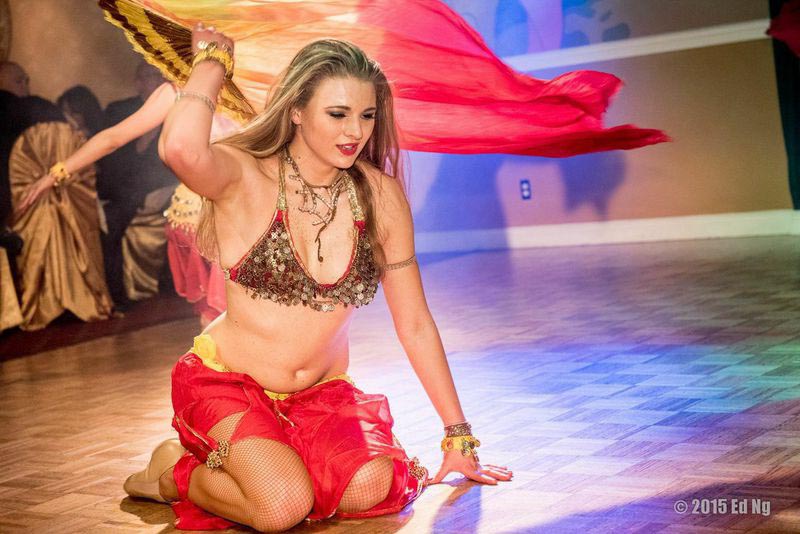 (I'm assuming you don't have an amazing teacher who has already prepped you appropriately. Lucky for you, if you do!!!!) If the thought of dancing professionally brings up thoughts of $$$$$, then skip to #10.
(I'm assuming you don't have an amazing teacher who has already prepped you appropriately. Lucky for you, if you do!!!!) If the thought of dancing professionally brings up thoughts of $$$$$, then skip to #10.
Just to get this out of the way - If you have taken less than a year of belly dance classes, get back to class. You aren't ready. How much longer should you take classes? Keep reading . . .
1. Find a mentor and schedule some how-to-be-a-professional private lessons immediately. Yes, private lessons are not inexpensive, but it's important to make this investment. Even if you have been dancing for a long time, that doesn't mean you are prepared for professional gigs. Not sure where to look? Ask for recommendations from other dancers. Don't have anyone in your area that qualifies? Seek out an online mentor. Your mentor should be supportive, but honest. Ask for guidance about professional rates, undercutting (preventing it, not doing it!), handling an audience (including receiving tips), working at restaurants, booking private parties, and how to structure a 15-20 minute set. Arrange for video critiques.
Arrange for video critiques.
If finding a mentor seems impossible, at least become connected with dancers all over the world through various internet groups (Biz of Belly Dance on Facebook). Read through as much as you can, then ask for guidance. You can even glean many helpful tips from Michelle Joyce's "Secrets of the Stage" DVDs (there are three).
2. Do an honest self-assessment of your skills. Are you able to perform with a veil? Finger cymbals? Cane? Sword (or other balancing prop)? Can you dance to Oriental entrance music, traditional dance classics*, baladi, Saidi, drum solos, and pop music in the manner that each genre suggests? Are you able to dance continuously for at least 20 minutes without becoming winded, while smiling and looking glamorous? This thread on Bhuz.com has some great suggestions for restaurant gig preparation. Film yourself dancing for at least ten minutes, in costume, and watch it carefully and honestly. (Now do it again with people walking through your dance space, preferably while carrying trays of food or drinks, and other obstacles such as a toddler who wants to dance with you and an oil spot on the floor. Ha!)
Ha!)
3. Learn as much as you can about Middle Eastern music. We can't do this job without it! Not only that, but musical knowledge is essential for structuring engaging performance sets with authenticity and variety. Shems has put together incredibly helpful information about the various parts of a performance.
4. Purchase at least two professional quality costumes and adjust them to fit you perfectly. Again, this is an investment in your new business venture. While the quality of your dancing, your business ethics, and ability to engage your audience are most important, you must look the part. Spend as much as you can afford, whether brand new or gently used. You don't have to spend $900 on a high-end designer costume, but the under-a-$100 items that pop up on eBay and elsewhere likely won't cut it. Select costumes that you LOVE to wear, flatter your figure, and are suitable for typical pro gigs such as restaurant performances and private parties. It's very important to make sure your costumes fit you as perfectly as possible. Gapping bra cups + skirts shifting or sliding down = looking unprofessional.
It's very important to make sure your costumes fit you as perfectly as possible. Gapping bra cups + skirts shifting or sliding down = looking unprofessional.
5. Educate yourself about the going rates for your area and charge accordingly. Samira Shuruk's "Rates by Region" page is an excellent resource.
6. Make connections with professional dancers and teachers in your area. Become friends on Facebook or through other social networks, support their events, and go to their gigs (tip them well, but DON'T dance for too long if they get you up during audience participation. I honestly don't care about this, but some dancers do.)
7. Establish a website, social media presence, and order professional business cards. There are so many inexpensive (or even free, but watch out for too many advertisements) options available for both. You'll want cards to leave with restaurant owners, give to customers, and connect with other dancers and you'll want someone searching your geographical area on the www to find you. You'll need photos for your cards and site. Use the best photo of yourself that you have that represents your performance style. If you can't afford a professional photo shoot, have a skilled friend take lots and lots of photos of you in full costume and make-up, either posed or during a performance.
You'll need photos for your cards and site. Use the best photo of yourself that you have that represents your performance style. If you can't afford a professional photo shoot, have a skilled friend take lots and lots of photos of you in full costume and make-up, either posed or during a performance.
A note about gig sites: I'm on the fence about these. They have become overrun with dancers who are undercutting and potential clients that really don't know what they're looking for and/or don't want to pay going rates. My advice is to participate in them cautiously and stick to your rates.
8. Read up on ethics for professional belly dancers. Suggested articles: Fair Rates (Samira Shuruk), Business Tips (Shira), Do's and Don't's (Schadia of Atlanta)
9. Set up a way to track your dance income & expenses. If you use an accountant for your taxes, consult him/her on the best method for this. Otherwise, log all income (even cash payments) and keep your receipts. If you want to call yourself a professional, you need to be honest with the IRS and keep everything legitimate. You'll probably be spending much of it on business expenses and will be eligible for deductions (speak with a tax professional about filing a Schedule C along with your 1040.)
If you want to call yourself a professional, you need to be honest with the IRS and keep everything legitimate. You'll probably be spending much of it on business expenses and will be eligible for deductions (speak with a tax professional about filing a Schedule C along with your 1040.)
10. Don't do this for the money. Seriously. I really mean it. To get started, you need to invest in costumes, veils, props, music, jewelry and other accessories, cover-ups, business cards, and make-up. This is going to run you a bare minimum of $600. (Remember, you have to spend money to make money.) It's going to take you more than one night's worth of gigs to recoup those expenses and by the time you do, you'll probably realize you need to spend more on higher-quality costumes that will withstand wear-and-tear of regular gigging and still hold their shine. Yes, there are dancers who can make at least a partial income from gigs, but they are in large cities with many restaurant & private party opportunities, usually teach several dance classes (or even fitness) a week, and are really, really GOOD.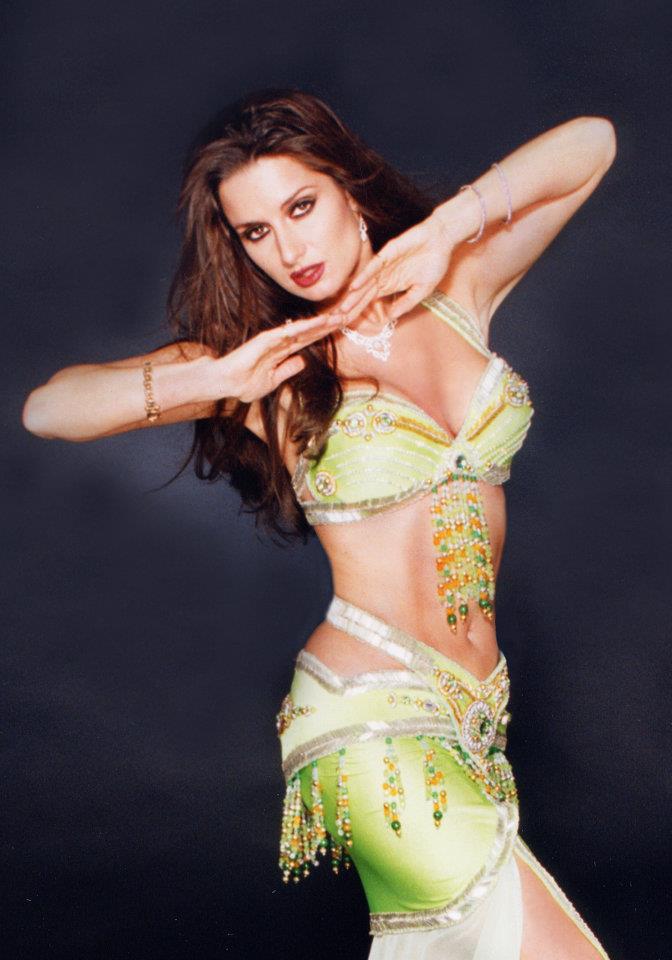 Plus they already have years of experience.
Plus they already have years of experience.
Well, think you still want to do this? Yes? Great. Then BE professional. It may take a while to get all your ducks in a row, but make it a priority before you seek out any (more) professional gigs. Walk the walk, talk the talk. Keep learning and growing. How we behave while calling ourselves professionals affects belly dancers all over the world. Sounds exaggerated, but it isn't. I'm trying to do my best to represent us well. I hope you'll do yours!
Is it difficult to become a dancer at 30?
Is it difficult to become ...
10 answers
Remove
#1
#2
6#3
Guest
Who do you prefer to look at, a young girl or a fat woman?
#4
#5
9000 #6
Guest
222 Well, yes, I’ve seen how many such dreamers I’ve seen “I’ll do this and that, I’ll just throw off those extra pounds”))) So they throw off until retirement, and in retirement they wave their hand at dreams. ))) So, the author if you want to dance - no problem, go to study, but know that you will dance only for yourself.
))) So, the author if you want to dance - no problem, go to study, but know that you will dance only for yourself.
#7
Puree with cutlet
Belly dancing is not ballet, so there are chances, of course. Moreover, in this form, internal eroticism is important, which at the age of 30 a woman, as a rule, has more than at 20 years old. But I agree with the fourth guest about the dreamers to lose weight and start a new life. In general, the author you need to start working. Not from Monday, but directly from today, from now. Sign up for dancing and lose weight at the same time.
#8
They call themselves dancers, but in fact they twitch to
music.🤣
And you are not too late, if you wish.
#9
#10
Elsa 9002 of course not late)) We had a 36-year-old girl who danced. Just keep in mind one thing - in order to dance in restaurants, etc., you need to be able to dance. Just twitching to the music will not work)) Belly dance is not as simple as it seems)
Just keep in mind one thing - in order to dance in restaurants, etc., you need to be able to dance. Just twitching to the music will not work)) Belly dance is not as simple as it seems)
New topics per day:
-
How to work until dismissal and not go crazy?
8 answers
-
What part-time job would you recommend?
2 answers
-
What should I tell the employer to the question?
4 answers
-
I hate my job
2 answers0002 15 answers
-
Decree and self-realization
4 Answer
-
I often change work
10 answers
-
Someone worked as a teacher or nanny in the garden?
3 answers
-
How can I earn from home?
11 answers
-
A rat in a team, how to fight?
24 answers
Popular topics per day:
-
why are tutors so expensive?
32 answers
-
Hell of a job!
31 answer
-
A rat in a team, how to fight? Work in a shoe shop
11 answers
-
I often change the work
10 answers
- 2
Girl driver bus
9 answers
-
How to work to a dismissal and not go crazy?
8 answers
-
My son is 20 years old and did not go to work
5 answers
-
Work.
 I want to change jobs
I want to change jobs 5 answers
The following topic
-
The boss intentionally offends the women-subordinate
100 answers
Previous theme
ᐅ How to become a dancer? | How do they become dancers?
Many people dream of working as a professional dancer, imagining fame, popularity and brilliance of spotlights. But how to become a dancer, what is needed for this? Let's find out!
To begin with, it is worth understanding that this is, first of all, hard work, and only a few are given to break onto the stage.
The profession of a dancer requires good physical shape and long training sessions.
Contents:
- How to become a dancer?
- How do you become a dancer from scratch?
- Schools for becoming dancers
- How to become a dancer without education?
- How to become a good and successful dancer?
How to become a dancer?
Anyone can become a dancer. This does not require special education, somewhere to study, and all that is needed is to experience the pleasure of dancing. But that's if it's a hobby. Amateur and professional dancing, pleasure and work as a dancer are very different concepts.
I dream of becoming a professional dancer. How do they become dancers in general, what do you need to know and be able to do, how to start?
Unfortunately, and maybe fortunately, not all become successful dancers. To do this, you need not only to love to dance, but also to have a confident and strong desire to improve, overcoming difficulties.
In order to reach the top in the profession, it is not so much external data that is important, but attitude to business and diligence. With these qualities, you can become a good dancer, whose performances are pleasant to watch the audience.
How do you become a dancer from scratch?
In order to become a dancer from scratch, you need to be sure that this particular job will become the work of a lifetime. Such a creative profession requires complete dedication and the ability to express vivid emotions.
Such a creative profession requires complete dedication and the ability to express vivid emotions.
In addition, you need to prepare physically and develop endurance. After all, rehearsals last many hours and take place almost every day.
Before you start mastering the profession, you need to decide on the style.
There are a huge number of them, and it is important to choose the most suitable one for yourself. When choosing, it is worth considering personal preferences and your level of physical fitness. For confidence, you can rehearse in front of a mirror.
Educational institutions where one becomes a dancer
You can become a dancer after receiving a special education. To do this, you need to enter an art college or university. They are accepted here on the basis of nine and 11 classes, depending on the direction.
To enroll in a group, you need to pass a creative competition, for which you should prepare well. You also need to be ready to provide the results of the exam in Russian and literature. The exact list of subjects required for admission can be clarified at the educational institution.
You also need to be ready to provide the results of the exam in Russian and literature. The exact list of subjects required for admission can be clarified at the educational institution.
Training to be a dancer in an educational institution is not yet a guarantee that you can become one.
Getting a professional education on the basis of a college or university will not yet give you the opportunity to become a dancer, but it is an opportunity to acquire all the necessary knowledge and skills.
Experienced teachers will help you develop your talent and fully reveal your creative potential. They will point out mistakes and help correct them. But a lot depends on the student. Therefore, the educational institution itself will not make you a dancer, it will only give you an opportunity.
For example, while studying, students have the opportunity to participate in many competitions and festivals, which will help them test their strength and even get a job offer.
How to become a dancer without education?
Many people become dancers without special education. For this profession, attitude and talent are much more important. If a person truly loves to dance and develops his abilities, then he will be able to achieve considerable success. It is important to understand that a couple of hours of training three times a week is not enough to become a professional dancer. You have to work hard and hone your skills.
For beginner dancers, it is not so much the technique of performance that is important, but the development of endurance and the ability to express their emotions through body language. The presence of charisma and a bright personality distinguishes a good dancer from the rest. You need to be ready for constant hard training and strictly follow the regimen.
You can learn to dance professionally if you have good skills on your own. But it is better to seek help from professionals. To do this, there are many circles, courses and dance schools. There, in a fairly short time, you can master a certain dance style. Regular classes with a dance teacher will help develop physical endurance, learn basic dance moves, and develop talent in yourself.
To do this, there are many circles, courses and dance schools. There, in a fairly short time, you can master a certain dance style. Regular classes with a dance teacher will help develop physical endurance, learn basic dance moves, and develop talent in yourself.
Members of clubs and dance schools often get the opportunity to participate in competitions and perform at concerts. This has a positive effect on emotional mood, increases confidence and gives you the opportunity to express yourself. Achievements in competitions will be a great addition to the portfolio of a novice dancer.
How to become a good and successful dancer?
In order to succeed and shine on stage, you will have to make a lot of effort. The most important qualities of a good dancer are charisma, perseverance and hard work.
The main thing is to choose this profession consciously and remember that behind the beauty and brilliance of dancers' performances there are constant training and heavy workloads.